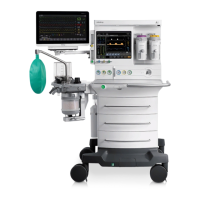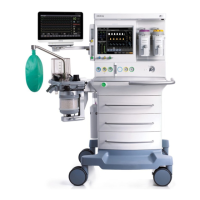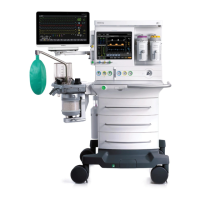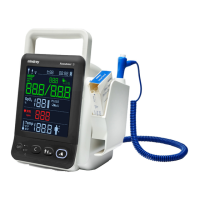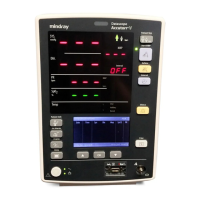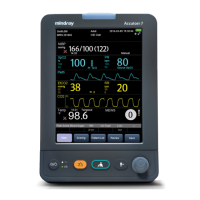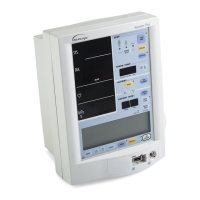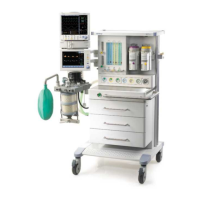7-60
7.6.1.1 Ventilator Valve Control Status Diagnostic Test
(1) Select Setup > Service > Diagnostic Tests > Valves to access the Valve Diagnostic Tests
screen.
(2) Safety valve diagnostic test: If the safety valve is set to On, on the status bar on the left, both
the safety valve states monitored by the VCM and VPM should be On. If the safety valve is set to
Off, both the safety valve states monitored by the VCM and VPM should be Off. If the preceding
requirements are not met, the safety valve is faulty.
(3) PEEP valve diagnostic test: Set the current of the PEEP valve to 450 mA. The monitored
current of the PEEP valve displayed on the left should fall within the range of 450±20 mA. If the
preceding requirement is not met, the PEEP valve is faulty.
(4) Inspiratory valve diagnostic test: Set the current of the inspiratory valve to 450 mA. The
monitored current of the inspiratory valve displayed on the left should fall within the range of
450±20 mA. If the preceding requirement is not met, the inspiratory valve is faulty.
7.6.1.2 Flow Sensor Test
When no flow measurement device is available, check the flow sensors in the following way:
(1) Remove the water collection cup (refer to 7.4.3).
(2) Directly connect the inspiratory port to the expiratory port with a breathing hose.
(3) As shown in the following figure, ensure that Safety Valve is On and that Auto/Manual
Valve and VPM Auto/Manual Valve are Auto.
(4) Set PEEP Valve Pressure to 100 cmH2O.
(5) Set Insp Valve Flow to 10 L/min, 30 L/min, and 60 L/min in turn. Check whether the flows
of Int-Flow Sensor, Insp Flow Sensor, and Exp Flow Sensor are consistent.
If the difference between the flow of Insp Flow Sensor/Exp Flow Sensor and that of Int-Flow
Sensor exceeds 1 L or 5%, whichever is greater, the measurement of the flow sensors is
inaccurate.
(6) Install the water collection cup after the test is complete.
Select Setup > Service > Diagnostic Tests > Valves.
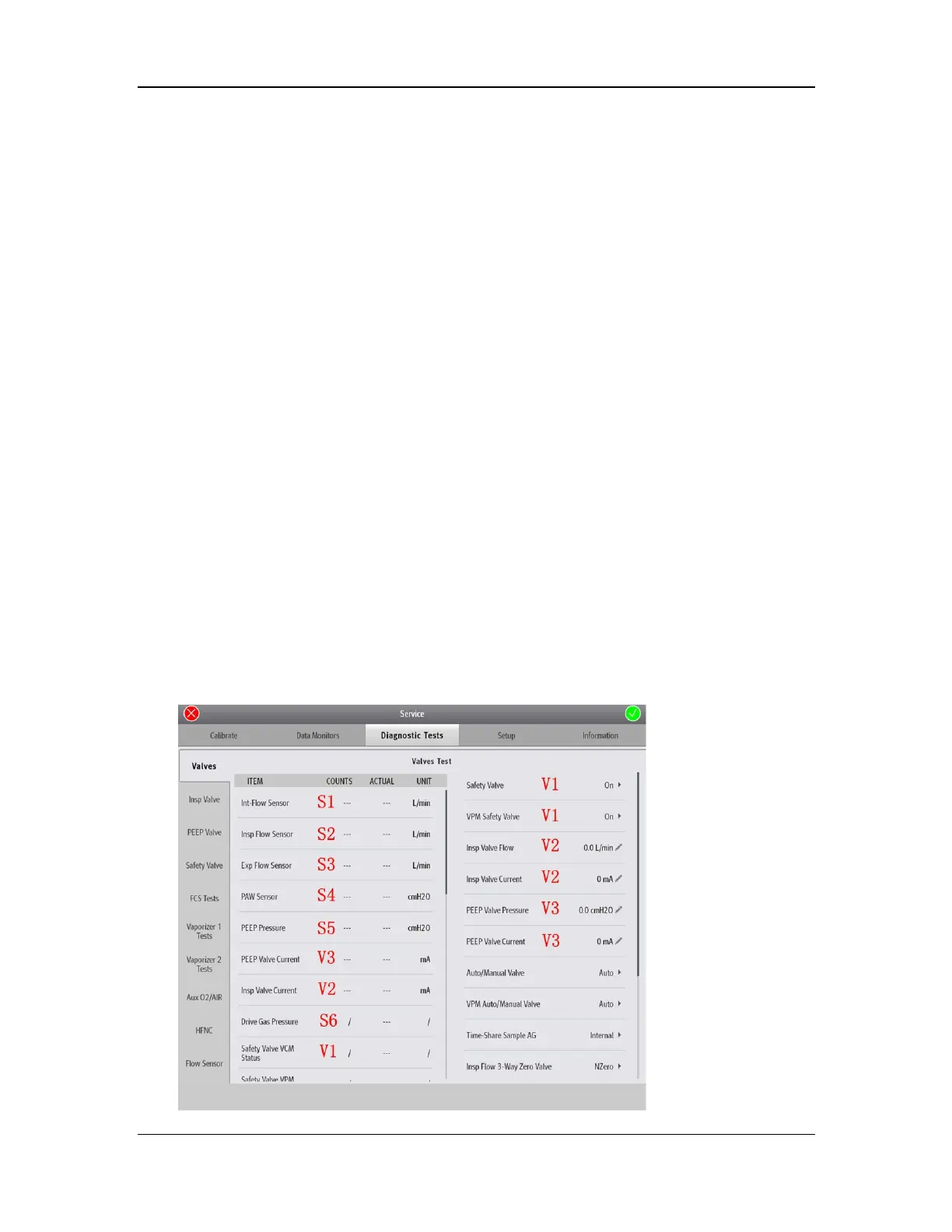